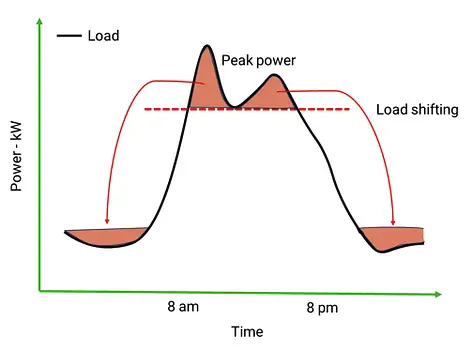Big savings, less hassles. Check out our newly launched DIY solar kits! 🌞⚡
Understanding Peak Shaving: Optimizing Energy Usage with Storage Systems
12/29/20233 min read


Have you ever wondered how energy consumption and costs fluctuate throughout the day? Peak shaving is a strategy that aims to optimise energy usage and reduce costs by utilising energy storage systems. In this blog post, we will explore what peak shaving is and how it can help balance energy demand and supply.
What is Peak Shaving?
Peak shaving is a technique used to manage electricity consumption during periods of high demand, also known as peak hours. During these peak hours, energy costs tend to be a lot higher due to the increased demand. The idea behind peak shaving is to store electricity during off-peak hours when energy costs are much lower and then use this stored energy during peak hours when energy consumption is in high demand.
By employing energy storage systems, such as batteries, during off-peak hours (e.g., after 10:30 pm), excess electricity is stored for later use. This stored energy can then be utilised during peak hours, effectively reducing the need to draw electricity from the grid when costs are at their highest. This technique is often referred to as load shifting as per blow chart.
The Benefits of Peak Shaving
Implementing peak shaving strategies can offer several benefits:
1. Cost Savings
By utilising stored energy during peak hours, businesses and households can reduce their reliance on grid electricity, which is typically more expensive during these periods. This can result in significant cost savings over time.
To illustrate how much a household can save on electricity bills, let's use the Octopus Intelligent Go tariff as an example with a 4 bedroom house with high usage. According to Ofgem, the high usage daily consumption in kWh is about 18kWh for multi-rate(i.e.: economy 7). The Octopus Intelligent Go tariff off peak rate is 7p/kWh and peak rate is 26p/kWh at the time of the writing. We can use the following calculation to work out how much the household can save in a year:



To storage 18kWh of electricity, we will need at least 18kWh battery capacity. If we use the FelicityESS LUX-X-48100LG01 stackable LFP battery with 20.48kWh capacity, which will cost £3300, the ROI is only 2.6 years. The FelicityESS batteries come with 10 year warranty, the family will enjoy more than 7 years of free electricity essentially.
2. Load Balancing
Peak shaving helps balance the demand and supply of electricity. By reducing the strain on the grid during peak hours, it can prevent power outages and ensure a stable supply of electricity for all consumers.
3. Environmental Impact
Using stored energy during peak hours reduces the need to rely on fossil fuel-based power plants, which contribute to greenhouse gas emissions. By optimizing energy usage, peak shaving promotes a more sustainable and environmentally-friendly approach to electricity consumption.
Implementing Peak Shaving
To implement peak shaving effectively, an energy storage system is required, namely a battery storage. This system stores excess electricity during off-peak hours. The stored energy can then be used during peak hours to power appliances, lighting, and other electrical devices.
Smart energy management systems can be used to automate the process of peak shaving. These systems analyse energy consumption patterns and automatically determine the optimal times for charging and discharging the energy storage system. This ensures that electricity is stored efficiently and utilized effectively during peak hours.
Conclusion
Peak shaving is a valuable strategy for optimising energy usage and reducing costs. By utilising energy storage systems to store electricity during off-peak hours and using it during peak hours, consumers can benefit from significant cost savings and contribute to a more sustainable energy future. Implementing peak shaving techniques, along with smart energy management systems, can help balance energy demand and supply, ensuring a reliable and efficient electricity grid.
Contacts
Tel: 02922 642462
Email: info@sunvault.co.uk
Socials
Subscribe to our newsletter
Legal policies
Verity Vox Ltd
Company number: 15793956
VAT No.: 470 0370 25
